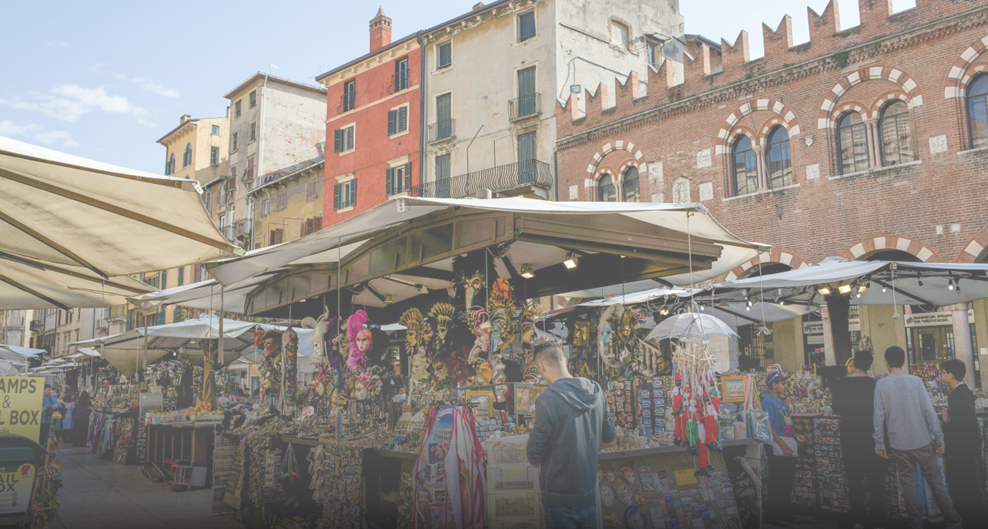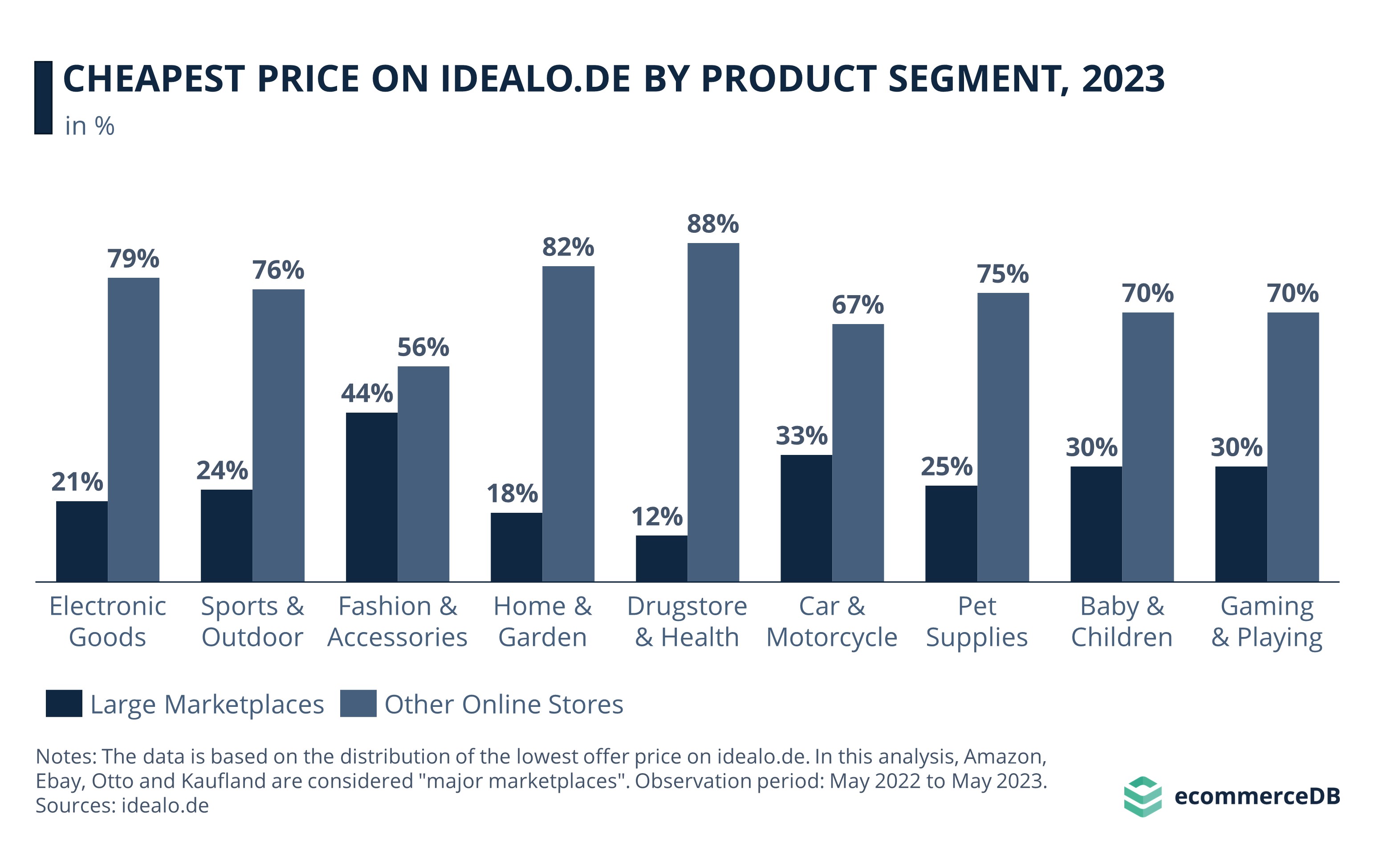Online Marketplaces: Big Players Lose Price Battle
Article by Lucia Laurer | August 22, 2023

Everyone in Germany knows the big online marketplaces Amazon, eBay, Otto and Kaufland. And many would probably say that they expect those giants to offer the best price. Would you? Find out if the assumption is true in our comprehensive price level comparison of online marketplaces in Germany.
Online marketplaces: Pillars of eCommerce
Online marketplaces have risen to become the cornerstone of eCommerce. By 2020, third-party online marketplace sales already constituted over 60% of global online retail sales. And the world of online marketplaces is dominated by the big players. The world’s biggest online marketplaces by total GMV Taobao, Tmall and Amazon accounted for more than half of the total GMV produced by the top 100 online marketplaces in 2020. Also at a country level, the top players usually lead at a great distance and dwarf many of their competitors. Does this also reflect in the price landscape? Are the top players cheaper or more expensive than their small competitors? Idealo analyzed the German market and revealed an intriguing trend.

Price Comparison: Smaller Marketplaces Triumph
Idealo analyzed more than 1,700 product categories to find out how often Germany’s biggest online marketplaces offer the cheapest price on the German price comparison platform idealo.de. Across all product groups, the “big four” Amazon, eBay, Otto and Kaufland offered the cheapest price in only 22% of cases. In a compelling 78% of cases, someone else had a better best price offer.
Biggest Price Disparities in the Drugstore & Health Category
The gap is especially pronounced in the drugstore & health category. Smaller marketplaces offered the best price in an overwhelming 88% of searches analyzed by Idealo in this category. The second most significant victory of smaller marketplaces was observed in the home & garden category, where they offered a better price in more than four out of five cases.
Fashion & Car Parts: Categories in Which the Big Four Win Most Price Battles
Interestingly, there is no single category in which the big marketplaces generally win the price battle. Yet there are some categories in which they at least hold their ground, such as the car & motorcycle category, where the big players offer the best prices in at least one third of cases. Another notable segment is the fashion & accessories category.
This is the only product category in which the gap between the leading players and smaller marketplaces is less than 20 percentage points: The “big four” secure 44% of price comparisons in the fashion category.
How Major Players Shape the Market Landscape
The Idealo analysis provides valuable insights into general pricing trends in the German online marketplace landscape: The major players seem to leverage their reach, prominence and general market power to take higher prices and possibly increase margins – and the strategy apparently pays off, as three out of the four mentioned big players register positive growth rates.
However, it is essential to note that this analysis cannot offer a complete view for each product category, as some of the big players have a category focus (e.g. Amazon with electronics), and other big players specializing in different areas (e.g. Zalando or AboutYou with fashion) were not included.
Key Insights
Overall, the Idealo analysis provides valuable insights into the pricing trends in the German online marketplace landscape. It is clear that smaller marketplaces are offering strong competition to the big players, and consumers should be aware of this when they are making purchases.
Smaller marketplaces often offer the best prices. This is good news for consumers, as it means they can save money by shopping around.
The biggest price disparities are found in the drugstore & health and home & garden categories. This is likely because these categories are dominated by a few large retailers, who have more bargaining power with suppliers.
The major players seem to leverage their reach, prominence, and general market power to take higher prices. This is a concerning trend, as it could lead to higher prices for consumers in the long run.
Related insights
Article
Top Online Marketplaces in Europe: Amazon with Huge Market Share
Top Online Marketplaces in Europe: Amazon with Huge Market Share
Article
Amazon GMV: Which Domains Grew the Fastest?
Amazon GMV: Which Domains Grew the Fastest?
Article
Zalando, Otto & About You: Revenue, Market Growth, Business Strategies
Zalando, Otto & About You: Revenue, Market Growth, Business Strategies
Article
Is Temu a Threat to Amazon, Zalando & Otto?
Is Temu a Threat to Amazon, Zalando & Otto?
Article
The State of Grocery Delivery 2024: What’s New at Amazon, Getir, Walmart & Target
The State of Grocery Delivery 2024: What’s New at Amazon, Getir, Walmart & Target
Back to main topics